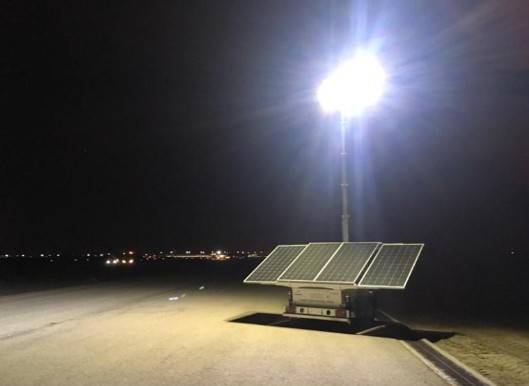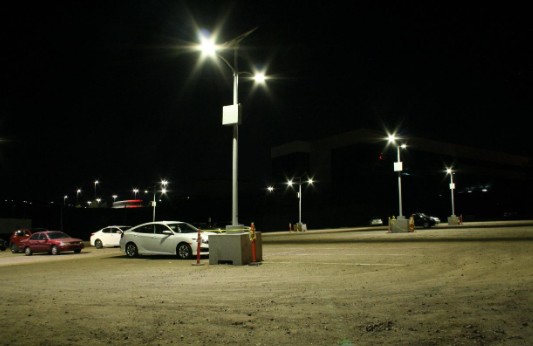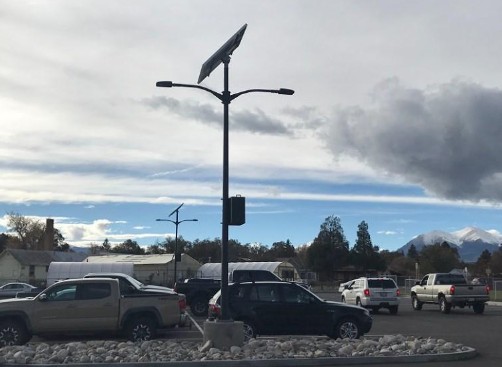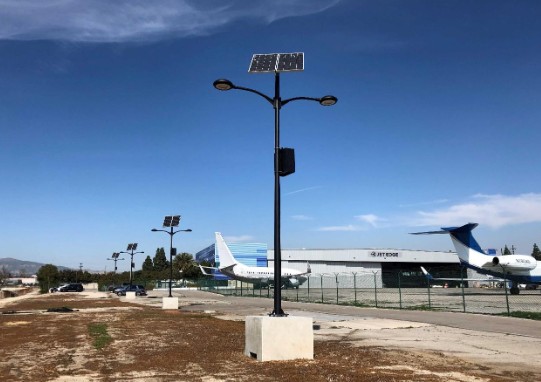Types of Construction Site Lighting: Illuminating the Path to Safety and Productivity
Construction sites are dynamic environments that require adequate lighting to ensure the safety of workers, facilitate efficient operations, and meet project deadlines. Proper lighting not only improves visibility but also reduces the risk of accidents and enhances overall productivity. Various types of construction site lighting systems are available today, each designed to meet specific requirements and provide illumination in different scenarios. Let's explore some of the common types of construction site lighting:
Temporary Lighting Towers

Temporary lighting towers are a popular choice for construction sites. These tall, freestanding structures consist of multiple light fixtures mounted on a telescopic mast. They provide bright, widespread illumination across the site. Temporary lighting towers are easy to install and can be adjusted to different heights and angles, allowing for versatile lighting coverage.
Portable Work Lights
Portable work lights are compact, handheld lighting devices that can be easily moved around the construction site as needed. They are often equipped with LED bulbs for energy efficiency and durability. Portable work lights are useful for localized lighting in specific work areas, such as dark corners, tunnels, or confined spaces.
Portable Mobile Light Towers
Diesel-powered portable mobile light towers are a popular lighting solution commonly used on construction sites. These towers are equipped with a generator that runs on diesel fuel, providing a reliable and continuous source of power for the lighting system. The towers are designed to be easily transportable and can be quickly set up at different locations on the construction site, offering flexibility in lighting arrangements. The diesel generator provides ample power to illuminate large areas, ensuring optimal visibility during nighttime operations or in poorly lit areas. These light towers are known for their robustness and durability, capable of withstanding the demands of rugged construction environments. With their high light output and ability to withstand challenging conditions, diesel-powered portable mobile light towers play a crucial role in enhancing safety and productivity on construction sites.
Solar-powered portable mobile light towers are an eco-friendly lighting solution gaining popularity in the construction industry. These towers utilize solar panels to harness energy from the sun, which is stored in batteries for powering the lighting system. The solar-powered configuration offers several advantages, such as reduced carbon emissions, lower operating costs, and quieter operation compared to diesel-powered alternatives. These light towers are highly portable, allowing them to be easily moved and deployed across different areas of a construction site. While they may have slightly lower light output compared to diesel-powered towers, they are still capable of providing sufficient illumination for various construction activities. Solar-powered portable mobile light towers are particularly beneficial in remote locations where access to electricity may be limited or expensive, offering a sustainable lighting solution that aligns with environmental goals.
Pole Mounted Lights
Pole mounted lights offer a versatile lighting solution for construction sites, with options for both permanent and temporary installations. These systems typically consist of a fixed-height fixture pole without a telescopic mast, providing stability and reliability for various lighting requirements.

Permanent Pole Mounted Lights:
For longer-term projects or areas requiring continuous illumination, permanent pole mounted lights are an ideal choice. These lighting systems are designed to be installed with in-ground concrete foundations, ensuring a secure and durable setup. The poles are typically made of sturdy materials such as steel or aluminum to withstand environmental conditions and potential impacts. Permanent pole mounted lights offer a robust lighting solution that can be strategically positioned to provide optimal coverage across the construction site. They are ideal for areas that require consistent illumination, such as entrances, parking lots, or pathways, enhancing safety and visibility for workers and visitors alike.

Temporary Pole Mounted Lights:
In cases where temporary lighting is needed, above-ground concrete pedestal bases are used, such as GREENSHINE Porta System. These temporary pole mounted lights offer a flexible and portable lighting solution that can be easily moved and repositioned as needed. The concrete pedestal base provides stability and support, ensuring the pole remains upright and secure. Temporary pole mounted lights are particularly suitable for construction sites where lighting needs change frequently or where mobility is essential. The above-ground setup enables quick deployment and relocation, allowing construction teams to adapt the lighting arrangement based on evolving project requirements. These systems are often used to illuminate temporary work areas, equipment staging areas, or temporary access routes, ensuring adequate lighting for efficient and safe operations.

Solar-Powered Lights
Solar-powered lights harness energy from the sun to power the light source. These lights are an eco-friendly and cost-effective solution for construction sites, as they eliminate the need for external power sources or electrical connections. Solar-powered lights are particularly useful in remote or off-grid construction locations.
Floodlights
Floodlights are powerful lighting fixtures that emit a broad beam of light. They are ideal for illuminating large areas, such as construction sites, parking lots, or outdoor work zones. Floodlights can be mounted on structures or tripod stands, and their adjustable angles allow for targeted lighting in specific directions.
Hazard Warning Lights
Hazard warning lights are essential for ensuring the safety of workers and visitors on construction sites. These lights are typically used to mark hazardous areas, barricades, or objects that pose a potential danger. They come in various forms, including flashing lights, beacons, and strobes, and are designed to attract attention and alert individuals to potential hazards.
Conclusion
When selecting construction site lighting, it is important to consider factors such as the size and layout of the site, required illumination levels, power source availability, and the specific tasks being performed. Additionally, energy efficiency, durability, and ease of installation and maintenance should be taken into account to optimize the lighting system's performance.
Proper construction site lighting is not only crucial for the safety of workers but also plays a significant role in improving productivity and project outcomes. By utilizing the appropriate types of construction site lighting, project managers can create a well-lit environment that promotes efficiency, reduces accidents, and enhances overall construction site operations.

